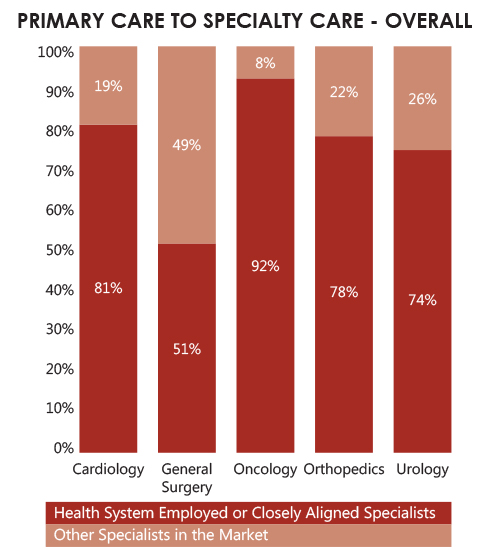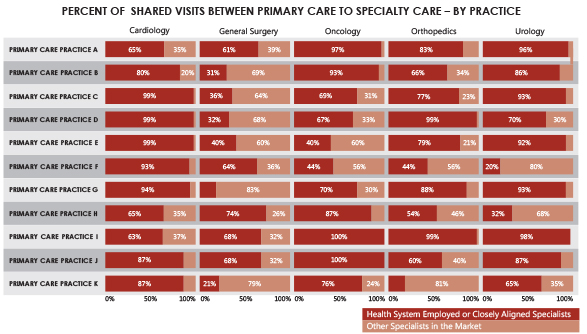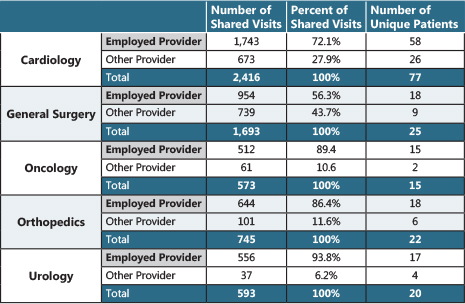
|
Download a PDF of this case study to share with your team |
A regional employed physician group sought to understand patient leakage from primary care to specialty care as it related specifically to their employed primary care providers within the region. With this data, the employed physician group intended to measure the impact of recent and anticipated primary care practice acquisitions in their market.
HSG Patient Flow was utilized to measure referral activity from employed primary care to specialists at the overall, individual practice, and individual provider levels for five strategic service lines: cardiology, general surgery, oncology, orthopedics, and urology. Baseline patient leakage was measured prior to primary care practice acquisition and was updated 6-months post acquisition to measure progress over time.
HSG PATIENT FLOW PROCESS
- Employed primary care providers were identified (80+) based on practice location, provider type (MD, APP), and specialty type (FM, IM).
- The specialists rendering services were categorized as “Health System Employed or Closely Aligned Specialists” or “Other Specialists in the Market.”
- All services related to the patient population were analyzed over a 2-year timeframe. Only relationships that occurred within a 90-day timeframe (POST) from the initial site of service with the employed primary care provider were incorporated into Patient Flow analyses.
At the overall level, the health system region’s employed primary care providers were mostly loyal to the employed or closely aligned cardiology, oncology, orthopedics, and urology service lines. Mostly loyal was defined as more than 75% of all patient service volume going from an employed primary care provider to an aligned specialist within the POST 90-day Patient Flow timeframe. Inversely, it was identified that loyalty levels were near 50% when measuring Patient Flow from employed primary care to general surgery at the overall level.
Measuring Patient Flow at the practice and individual provider levels to specialists provided valuable insight to the health system region leadership as they evaluated current and proposed practice structures that would be impacted by new primary care practice acquisitions.
Loyalty from primary care to specialist varied greatly by practice with noticeable outliers for general surgery, orthopedics, and urology that would require immediate intervention. Practice locations and provider mix were reviewed in detail resulting in numerous restructurings based on outcomes of HSG’s baseline Patient Flow analysis.

Lastly, Patient Flow measurement was also conducted at the individual provider level to each of the same five specialties. As would be anticipated, patient leakage by provider was the most variable. After data review with individual primary care providers there was quite a bit of surprise at which specialists patients selected for services in the market and surrounding areas. Many practitioners were able to incorporate feedback from reporting into their daily practice to further educate their patient populations on which specialists they have relationships with and will be able to continue open lines of communication with following specialty services.

Measurement was updated 6 months from primary care practice acquisition date showing stable Patient Flow for cardiology, oncology, orthopedics, and urology with a 3% increase in general surgery volume to aligned specialists. Measurement is planned to be ongoing to continually measure strategy success and minimize patient leakage from employed primary care providers.

To learn more about HSG’s analytic approach and get a complementary HSG Patient Flow report for providers in your market, contact DJ Sullivan or Eric Andreoli.
